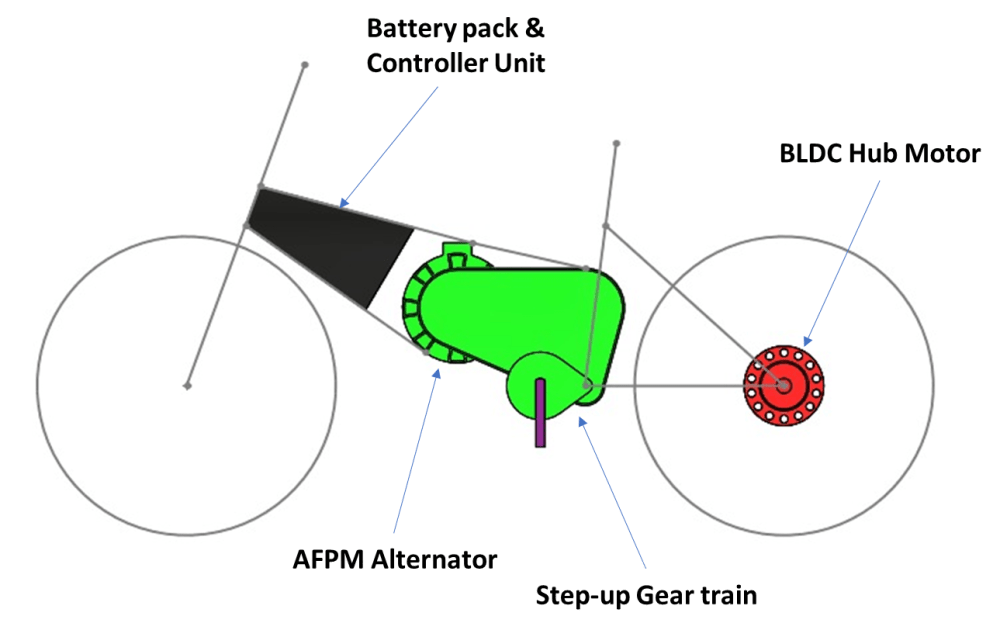A typical electric bike ranging 60KM per full charge will take more than 3 hours to charge and limited availability of public space makes it difficult to install charging stations. In this model, a powertrain is proposed for an electric bike which has its own power generation system.
A cross breed smart electric powertrain is a newly developed and more advance electric bike which works with high accuracy and in a cost-effective manner. The term “Cross Breed” refers to the involvement of the characteristics of a motor bike, electric bike and a bicycle powertrain systems. This powertrain was fully focuses on the reducing the cost of utility by involvement of the concept that converts the regenerated energy into digital currency. It has both power consumption and power generation unit with an integrated battery that makes that makes power train more efficient and suitable for shared mobilities.
The cross breed smart electric bike is a hybrid technology which is based on the bicycle platform that can overcome all the existing problems in the field of bike sharing service. It is being developed based on some sophisticated technological method to ensure the proper working of system and elimination of drawbacks.
The crossbreed powertrain was designed in such a way to power the hub motor and battery simultaneously by means for minimal mechanical power input during pedaling. The power generation unit of powertrain was placed in the mid of the e-bike in order to convert the pedaling motion into useful electrical energy effectively. The basic schematic outline of crossbreed powertrain as represented in the illustration #1. According to the construction of the powertrain, the rider can operate the e-bike with a low-storage capacity battery which can reduce 30% from the overall cost of the bike.
The crossbreed power train can able to produce 360W of electrical power from 52W of input mechanical power at pedal with max. speed & torque of 30 rpm and 16.5 N-m respectively. It could operate a 250W BLDC hub motor with max. speed & torque of 400 rpm and 32 N-m respectively. The relation between various segments of the proposed powertrain as represented in illustration #2.
Like this entry?
-
About the Entrant
- Name:Manickavasagam P
- Type of entry:individual
- Patent status:none





